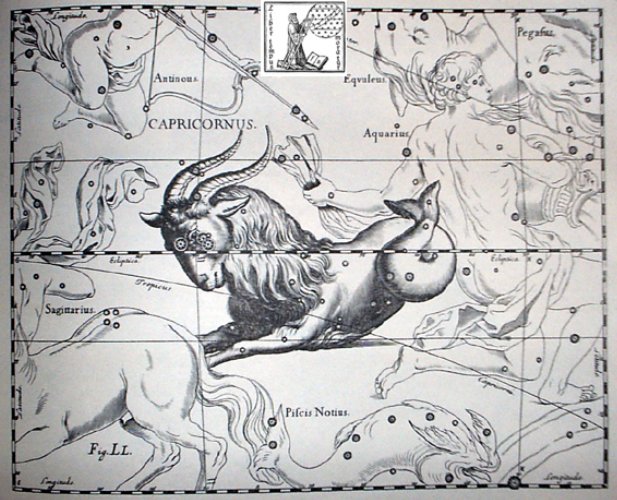Let's try once more. To begin with we have the 3 dates of the Saints:
The distance from St George to St John is 60 days, which seems well planned. Next we can divide the distance from the beginning of the year to the day of St George into 80 (to the March equinox) + 33 days:
Now we have twin periods with 33 days in each and it seems reasonable to use the same type of glyph for both saints:
Gredi, my strange name for the nakshatra star of Avior (ε Carinae), is α Capricorni. Somewhere I must have stumbled because Al Giedi means the Goat.
... From Deneb Kaitos (9.4) rising in spring to Deneb Algiedi (329.8) there are 320 days, leaving only 45 days to the end of the year. Above we can imagine a chiastic structure involving the glyph types (a) manu rere and (b) tara and Rei. There is a similarity in design 'quality' between tara (in Ca2-8) and Rei (Ca5-21). Possibly the tara type of glyph with an open great 'jaw' illustrates the very great intake of breath when 'sky' and 'sea' are separating in spring (at the time of St George). And Rei at the time of St James could then illustrate a kind of sea shell. When new land is rising up from the sea there is initially no grass or trees growing on it. But there are shells. The 'emblematic' quality of this pair of glyphs reminds me of the pair in G:
There are twin great feats, first the rising of the sky roof in early spring and later the drawing up of new land from the sea. From the first to the second there are 60 + 33 = 93 days. In the center is June 9 (where 160 = 113 + 92 / 2 + 1):
Land (henua) is the result in Ca5-23 and in Ca2-9 there is a tagata who departs (oho). He has no hands.
Indeed, we could compare this life-less tagata (with an open perimeter) with a pair of separated 'shells'. If we change the length of the year from 365 days to 366 (= 2 * 183 = 6 * 61), then the symmetries will become even greater, with 80 + 160 (= 2 * 80) = 240 (= 3 * 80) days outside the 'season of upheaval':
We can, furthermore, find the 'Hyades gate' halfway from St George to St John (113 + 29 - 80 = 62):
However, Antares should have a place in this calendar map of time. From St James (206) to the date when Antares was rising heliacally (329) there are 123 days:
3 * 33 + 3 * 50 = 249 (the RA day of Antares). In addition there are 80 days to March 21, and 80 + 249 = 329. | ||||||||||||||||||||||||||||||||||||||||||||||||||||||||||||||||||||||||||||||||||||||||||||||||||||||||||||||||||||||||||||||||||||||||||||||||||||||||||||||||||||||||||||||||||||||||||||||||||||||||||||








